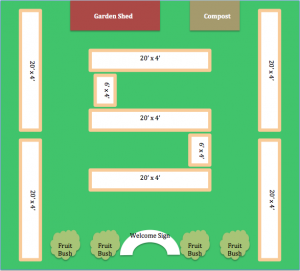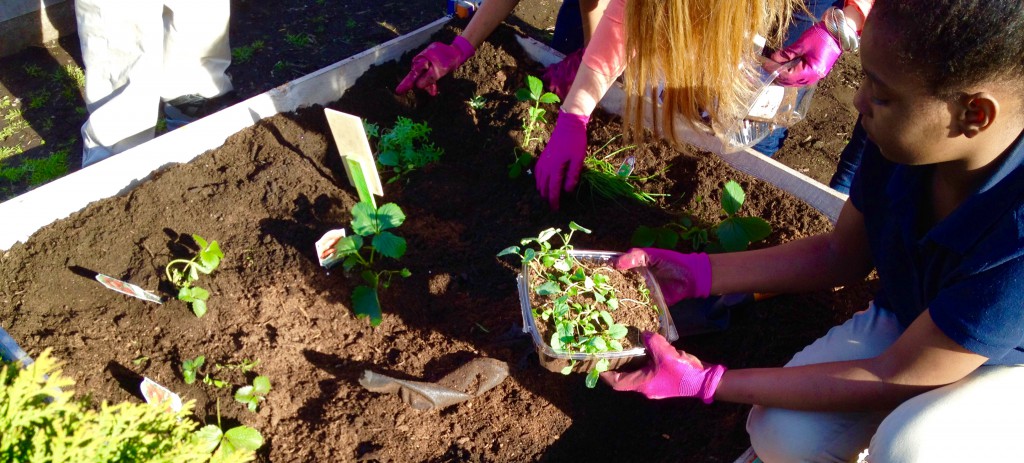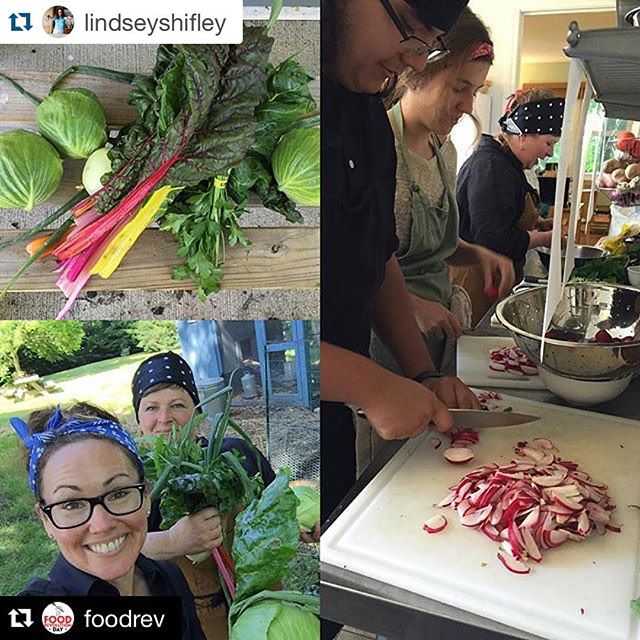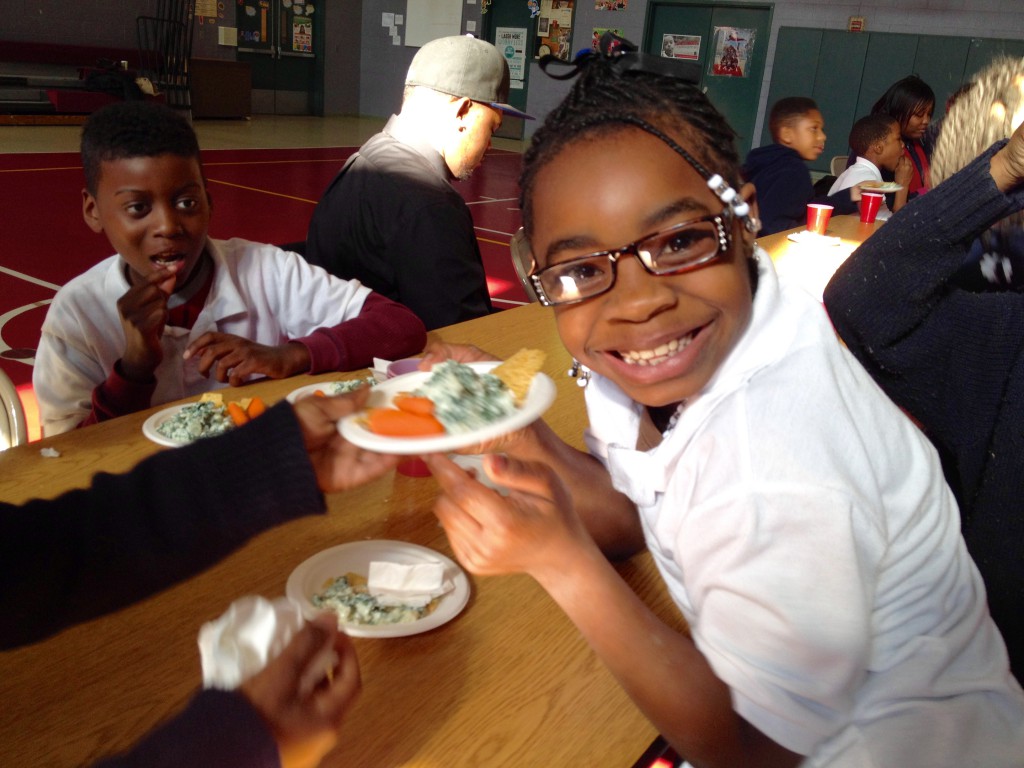
School gardens are growing in Springfield, Illinois, alongside the rise in community gardens. Driving around Springfield, you can learn a lot about the growing seasons just by peeking at some of the many gardens you can find in parks or on the corner! These food gardens inspired teachers at Southeast High School to build a garden on their own grounds.
With the help of IFSN member genHkids, Southeast High School will break ground on their new school garden this fall. It will be a garden of raised beds, fruit bushes, a compost station and a large welcome sign on school grounds. Funds for the garden have been raised through grants and private donors, and the school is currently seeking more help to make their dreams a reality. Recently, $1000 was donated by local company Mike Williams Plumbing, Heating, and Air Conditioning.
 Food from the garden will be used in the Nutrition and Culinary Arts classes. The garden will also be used for units in an array of other classes including the photosynthesis unit in freshman biology and possibly an outdoor painting unit in art class. 21st Century, an afterschool program, will be involved in maintaining and harvesting in the garden. During the summer months, community members will be welcomed into the garden to help and benefit from its harvest. The garden will be an asset to the community and school alike.
Food from the garden will be used in the Nutrition and Culinary Arts classes. The garden will also be used for units in an array of other classes including the photosynthesis unit in freshman biology and possibly an outdoor painting unit in art class. 21st Century, an afterschool program, will be involved in maintaining and harvesting in the garden. During the summer months, community members will be welcomed into the garden to help and benefit from its harvest. The garden will be an asset to the community and school alike.
Kayla Worker, the Nutrition and Culinary Arts teacher, has been very active in making this school garden dream a reality. The following is a personal note from Ms. Worker.
We are so excited to bring a school garden to Southeast High School. In Springfield Public Schools #186, school gardens have been generating interest at the elementary level, but not at the high school level. I never imagined when I began volunteering with genHkids at the community garden on 3rd and Canedy Street in Springfield, that I would be able to bring a garden back to my school. The staff at genHkids couldn’t have been more enthusiastic when I told them I was interested in having one at Southeast. Since then, lots of excitement and planning has gone into the works to prepare to build and plant in the garden this spring. The students and staff are so excited for the garden. We have purchased outdoor grills to do a grilling unit in the garden, and the school librarian won a grant for a Little Free Library that will be placed in the garden. I have been bringing in all sorts of produce from the community garden so the students can start to see the sort of produce we will be producing. Students actually ask me what vegetables I’m bringing tomorrow and make specific requests. I love it! Knowing where your food comes from and eating good, quality food is absolutely critical to bring to our children. An epidemic of obesity can be replaced with an epidemic of gardens. Thank you, genHkids, for making my dream a reality.
genHkids is a non profit organization located in Springfield, Illinois. The Coalition’s mission is to create a generation of healthy kids through education, empowerment, improved nourishment, and increased daily physical activity, thereby reducing the incidence of childhood obesity and its detrimental health effects.
Founded in 2008 by Dr. Kemia Sarraf, genHkids includes a fast growing coalition of volunteers, staff, and committed members of the medical community. With the help of Kayla Worker, The Spartan Garden will be genHkids’ first High School Farm to School program in Sangamon County.
If you want to start your own school garden, make sure to visit the IFSN School Garden Resources page. If you want to start a genHkids program in your school, check out their website. Don’t forget to like the Illinois Farm to School Network on Facebook for more stories like this!




 _______________________________________________
_______________________________________________